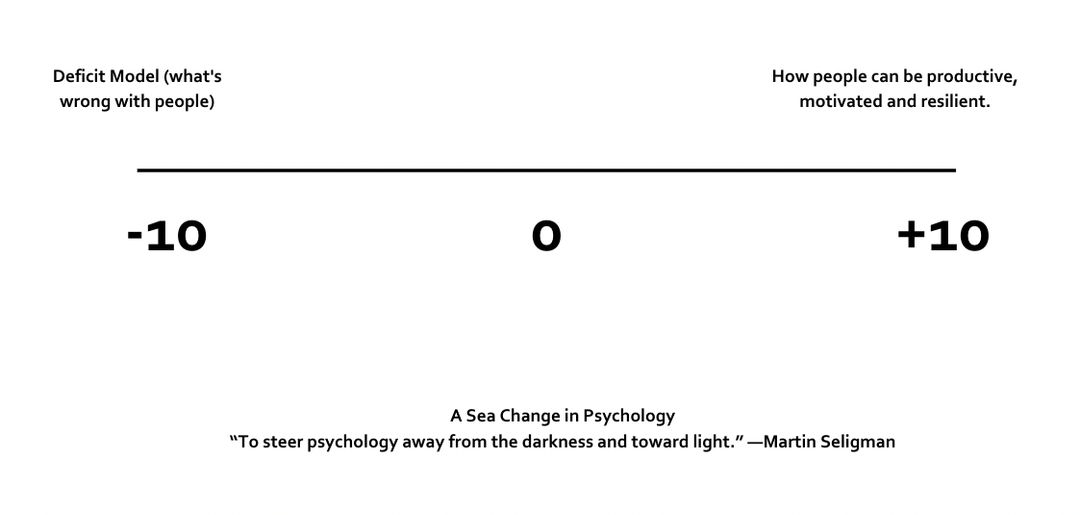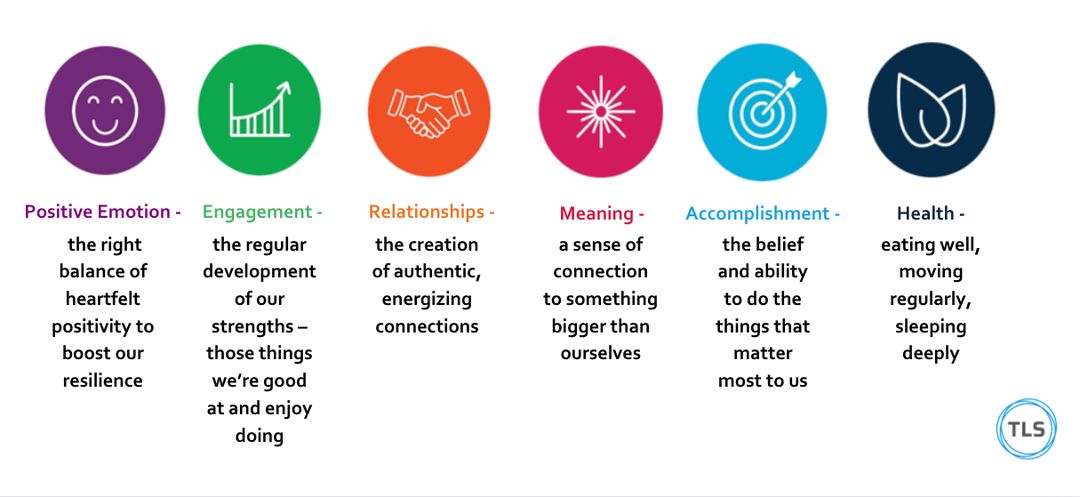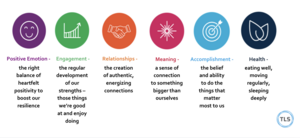

Positive Psychology
Instructions
SLIDE X: TITLE SLIDE
Step 1: Introduction / Background (summarise as you see fit)
Before we discuss strengths, we’ll look at the foundational piece around POSITIVE psychology.
What do you think it means?
The story of positive psychology starts, its founder often says, in 1997 in his rose garden.
Martin Seligman had just been elected head of the American Psychological Association and was in search of a transformational theme for his presidency. While weeding in his garden one day with his young daughter, Seligman found himself distracted and frustrated as Nikki, then 5, threw flowers into the air and giggled. Seligman yelled at her to stop, at which point Nikki took the professor aside. She reminded him how, from ages 3 to 5, she had been a whiner, but on her fifth birthday, had made a conscious decision to stop. If she could change herself with an act of will, couldn’t Daddy stop being such a grouch?
Seligman had an epiphany. What if every person was encouraged to nurture his or her character strengths, as Nikki so precociously had, rather than scolded into fixing their shortcomings?
We’ve learned that to develop people – to get the best out of people – we need to tell them what’s wrong and then fix it! And what we learn growing up mostly stays with us, so we then take into the workplace.
All this is done with good intentions, wanting to improve us, make us better, but research is now showing we need some serious rebalancing back to our strengths often these conversations and messages are in this zone – with -10 being at that end, zero here in the middle and +10 at that end, most of the focus is on the -10 to zero area – our weaknesses – fix this and then you’ll be able to excel.
Psychology was originally based on the deficit model – looking at what was wrong with people in prisons, hospitals, schools and organisations. In the late 1990s psychologists such as Martin Seligman started a new branch of psychology called ‘Positive Psychology’ – specifically looking at how people can thrive and be more productive, motivated and resilient – looking at what is strong instead of what is wrong. There has been lots of research done since then.
SLIDE X AND X: FROM SURVIVING TO THRIVING (DRAW UP/SLIDE)

Traditional Psychology aims to move people from -10 to zero and says we will unleash 0 to +10. Traditional tools seek to measure the deficit. What we know however is that these two are independent – can have positive and negative affect at the same time. If only focus on the negative it becomes a ZERO SUM GAME
Most of the literature had a deficit based - focus e.g. mental illness; depression, people just functioning and wondered - How do we help people to thrive?
How do we move from 0 to 10 - to flourish?

Reflection: (optional) In your workbook, mark on the scale where you think you are currently. Where are you struggling/thriving?
Reflection piece. No need to share with the group.

(Background Information)
He convened teams of the nation’s best psychologists to formulate a plan to reorient the entire discipline of psychology away from mostly treating mental illness and toward human flourishing. Then, he used his bully pulpit as the psychology association’s president to promote it. With Seligman’s 1998 inaugural APA presidential address, positive psychology was born.
Seligman told the crowd that psychology had lost its way. It had “moved too far away from its original roots, which were to make the lives of all people more fulfilling and productive,” he said, “and too much toward the important, but not all-important, area of curing mental illness.”
A Sea Change in Psychology
The APA leader called on his colleagues to join him to effect a sea change in psychology and to create a science that investigates and nurtures the best human qualities: a science of strengths, virtues, and happiness. What Seligman named “positive psychology,” using a term coined in 1954 by humanistic psychologist Abraham Maslow, promises personal transformation through the redemptive power of devotional practices: counting blessings, gratitude, forgiveness, and meditation. And it is expressly designed to build moral character by cultivating the six cardinal virtues of wisdom, courage, justice, humanity, temperance, and transcendence.
“To steer psychology away from the darkness and toward light.” —Martin Seligman
What if, he began to wonder, he studied well-being instead of unhappiness, accomplishment instead of failure, strength instead of sickness?
Background
Introduction to positive psychology.
Understanding my own strengths (usually Values in Action or Clifton Strengths Finder or a free tool). See Authentic Happiness website: https://www.authentichappiness.sas.upenn.edu/home
Group strengths.
Best Self Exercise / Interview.
Reference other tools: Gratitude visit, three good things.
Contribution (Ben Zander video).
Leveraging your team’s strengths and contribution.
NB: On point 2
**VIA Character Strengths**
If using the VIA Character Strengths, participants will need to have completed it before the session and have at least their top five character strengths with them. The survey is about 120 questions long and takes about 20 minutes to complete. There is a paid version and a free version. Unless it has been accounted for in the proposal just direct them to the free one. They will need to register and they receive their results immediately after they complete the survey.
**Clifton Strengths Finder** (If included in proposal – there is only a paid version of this).
Free tools available here.





Comments (0) (5.0 avg / 1 ratings)